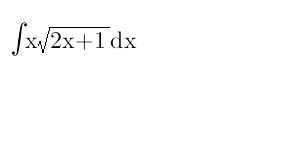
AllQuestion and Answers: Page 1881
Question Number 21430 Answers: 1 Comments: 0
Question Number 21429 Answers: 1 Comments: 0
Question Number 21423 Answers: 1 Comments: 0
Question Number 21412 Answers: 0 Comments: 0
Question Number 21411 Answers: 0 Comments: 0
Question Number 21422 Answers: 1 Comments: 3
Question Number 21426 Answers: 1 Comments: 0
Question Number 21406 Answers: 0 Comments: 2
Question Number 21405 Answers: 1 Comments: 0
Question Number 21404 Answers: 1 Comments: 0
Question Number 21401 Answers: 0 Comments: 0
$$\underset{\mathrm{0}} {\overset{\infty} {\int}}\frac{{xdx}}{{e}^{{x}} +\mathrm{1}}=? \\ $$
Question Number 21398 Answers: 1 Comments: 0
Question Number 21394 Answers: 2 Comments: 0

Question Number 21392 Answers: 1 Comments: 0

Question Number 21390 Answers: 0 Comments: 0
Question Number 21388 Answers: 0 Comments: 4
Question Number 21377 Answers: 0 Comments: 0
Question Number 21366 Answers: 3 Comments: 0

Question Number 21357 Answers: 1 Comments: 0
$$\mathrm{Solve}\::\:\mathrm{log}_{\mathrm{2}{x}+\mathrm{3}} {x}^{\mathrm{2}} \:<\:\mathrm{1} \\ $$
Question Number 21356 Answers: 1 Comments: 0
Question Number 21355 Answers: 1 Comments: 0
Question Number 21354 Answers: 0 Comments: 4
Question Number 21374 Answers: 0 Comments: 2
Question Number 21350 Answers: 0 Comments: 0
Question Number 21342 Answers: 1 Comments: 0

Question Number 21341 Answers: 2 Comments: 0
Pg 1876 Pg 1877 Pg 1878 Pg 1879 Pg 1880 Pg 1881 Pg 1882 Pg 1883 Pg 1884 Pg 1885
